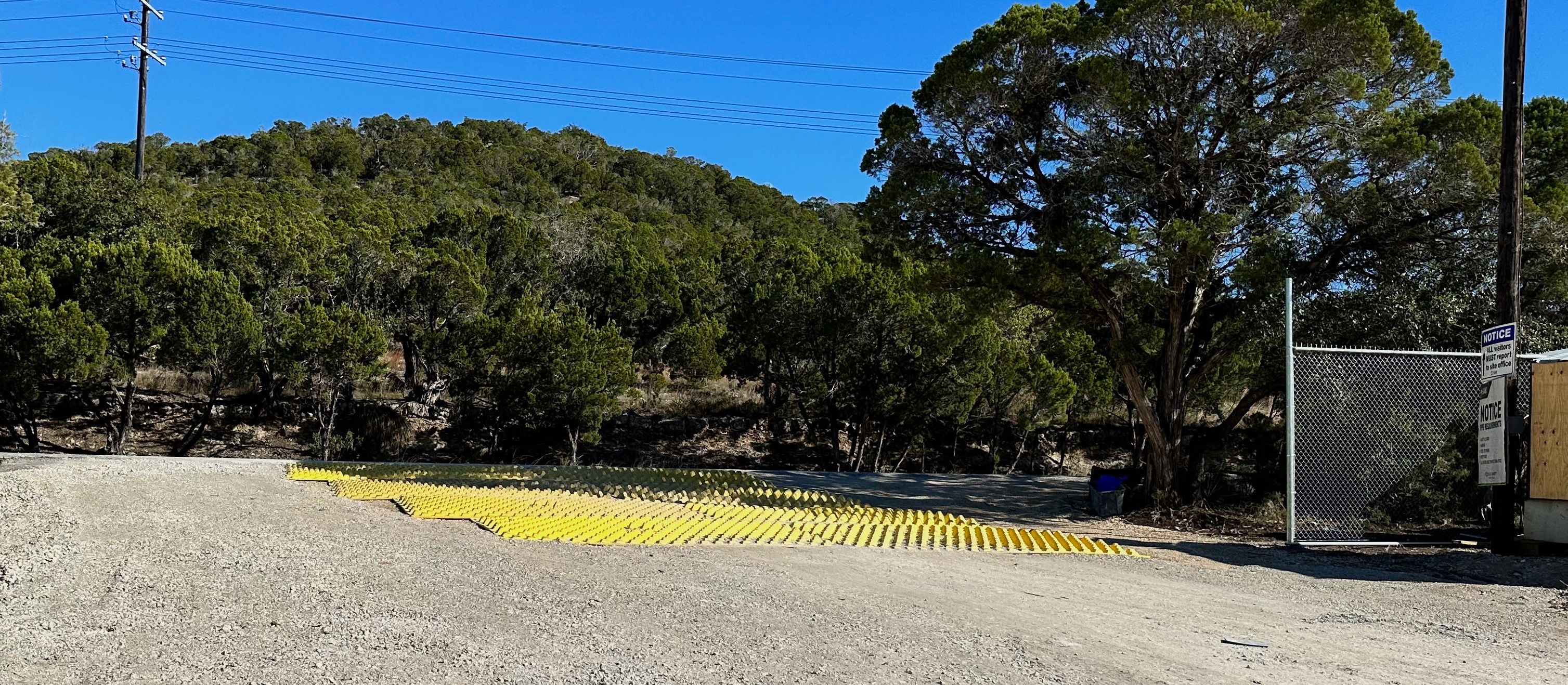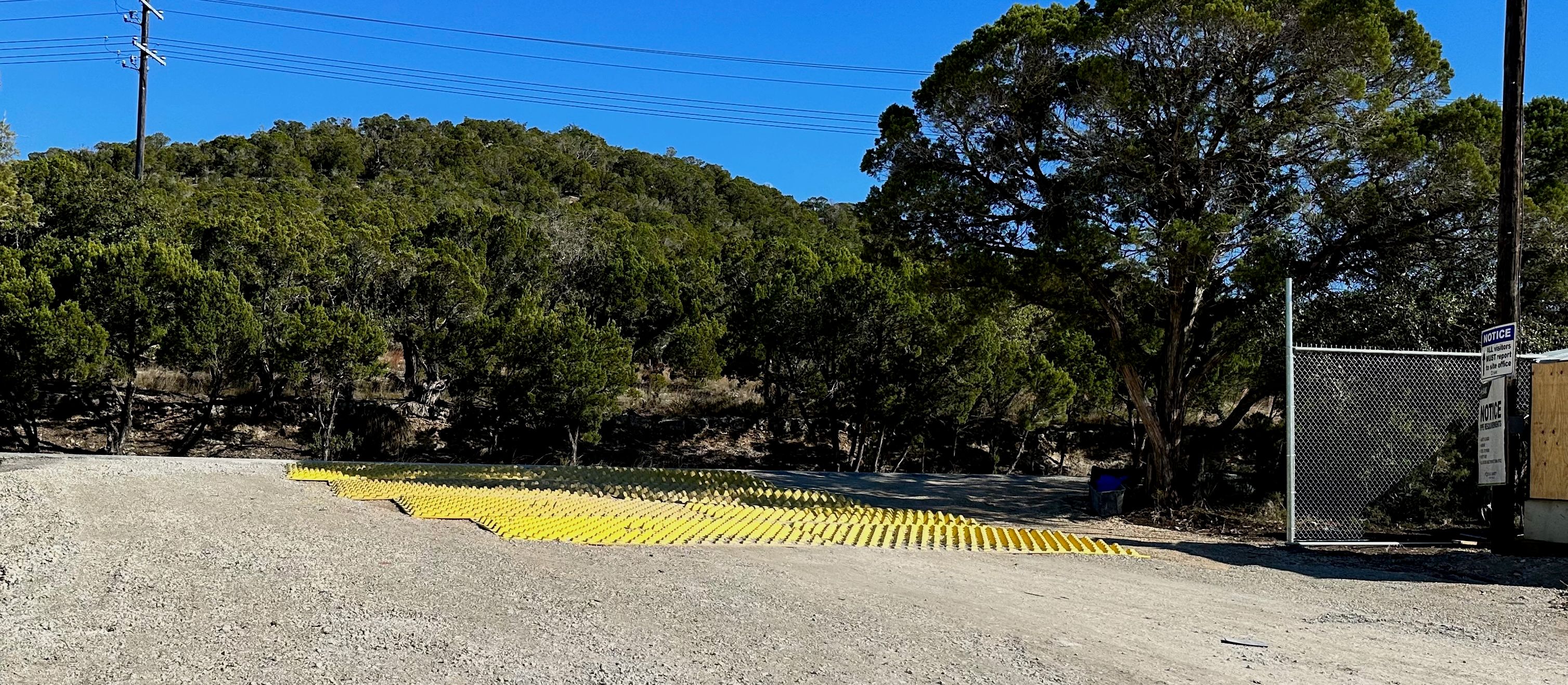Texas Stabilized Construction Exit
In 1998, Texas assumed responsibility for administering the National Pollutant Discharge Elimination System. The Texas Commission on Environmental Quality (TCEQ) administers the EPA requirements under the Clean Water Act and implements the Texas Pollution Discharge Elimination System (TPDES) program. TPDES oversees most stormwater and other pollutant discharges to Texas surface waters. While historically some oil and gas–related discharges fell under the jurisdiction of a different regulator, in 2021, the TCEQ was granted authority by the Environmental Protection Agency (EPA) to regulate certain discharges associated with oil and gas operations.
Texas TPDES Construction General Permit TXR150000
The TPDES Construction General Permit, or TXR150000, authorizes the discharge of stormwater from construction sites, ensuring that correct measures are taken to comply with TPDES regulations. Construction projects that disturb one acre or more of soil typically must obtain TPDES permit coverage and submit a SWP3 under TXR150000. Construction sites that disturb at least 1 acre but less than 5 acres, and are not part of a larger common plan of development, must also obtain permit coverage, but may be eligible for a Low Rainfall Erosivity Waiver if the calculated erosivity (R-factor) for the construction period is less than 5.
To obtain a permit, an application must be submitted with a Storm Water Pollution Prevention Plan (SWP3). A SWP3 identifies potential pollution sources and also serves as a road map for pollution prevention measures that will be implemented on the project. Operators can implement individual SWP3s, or a single SWP3 that covers the entire project can be shared among operators. Shared SWP3s must include the signatures of each operator and clearly outline their respective responsibilities. Operators must also coordinate to ensure that any changes to plans or BMPs do not reduce the effectiveness of pollution and erosion controls implemented by other operators. One component of the SWP3 outlined in the Construction General Permit is minimizing “off-site vehicle tracking of sediments and the generation of dust. The SWP3 shall include a description of controls utilized to accomplish this requirement.”
TxDOT STABILIZED CONSTRUCTION EXIT
Texas Department of Transportation (TxDOT) has implemented a statewide Storm Water Management Plan (SWMP), which includes Minimum Control Measures (MCMs) to keep in compliance with TPDES. The MCM for sediment trackout involves the use of stabilized construction exits, which are typically built on a graded substrate to direct runoff to the appropriate sediment controls. Standard rock-stabilized exits generally consist of a layer of angular aggregate, often 6 to 12 inches thick, placed over geotextile fabric to provide a durable surface for construction traffic. Alternative systems, such as prefabricated mat-style or timber-based entrances, may be used where approved by the project engineer, provided they offer comparable control of sediment trackout. These stabilized exits must be redressed with additional rock as sediment accumulates in the aggregate, and they must be removed after the job is completed.
TxDOT Alternative Construction Entrance BMP: FODS Reusable Construction Exit

FODS Trackout Control System is a rockless and waterless alternative to the TxDOT construction entrance. FODS has been demonstrated to remove over twice as much sediment from vehicle tires compared to traditional rock entrances. This modern construction entrance can be used on excavation, grading, and heavy civil projects where heavy traffic volume causes traditional systems to degrade quickly. Mats can be cleaned on-site to fully restore effectiveness, which can minimize downtime and increase compliance with the TPDES permit requirements. A 1x5T layout is typically used to provide one lane of travel with a wide turning radius adjacent to the roadway. The FODS rockless stabilized construction entrance is a novel and effective method for controlling sediment trackout.
Texas Projects Using FODS Construction Entrance
In Harris County, major expansion projects are underway to increase the maximum water capacity of bayous, lakes, and rivers, thereby protecting against flooding during extreme weather conditions. The Harris County Flood Control District conducted a comparison between the traditional rock construction entrance and FODS trackout control mats. The project was a large excavation site that had up to 800 trucks exiting the site per day. The report concluded that “FODS provided equal or greater performance than SCA,” and the daily reports showed that roadway cleaning was reduced by 59%. This report demonstrates the effectiveness of FODS mats in both wet and dry conditions.
FODS were used during the construction of a new campus being built just north of Austin, which is expected to provide up to 15,000 new jobs to the Silicon Hills.

In Baytown, just east of Houston, a $2 billion chemical plant expansion project in the oil and gas industry is utilizing FODS to provide clean, long-term trackout control.
FODS mats provide an effective alternative to traditional stabilized construction exits. The FODS Trackout Control System is modular, consisting of a single layer of pre-manufactured mats with pyramidal structures throughout the surface. This modular system can be installed in both single-lane and dual-lane layouts. As vehicle tires pass over the pyramids, the tire lugs expand, allowing trapped sediment to fall to the base of the mat. Even after heavy use, mats can be fully restored by cleaning with a street sweeper or shovel. With an expected lifespan of over 10 years, the FODS trackout control system lowers costs while increasing compliance.
Additional Resources:
Texas Pollutant Discharge Elimination System (TPDES) Program
TPDES TXR150000 Construction General Permit
DOT Stormwater Field Inspector Guide
TxDOT Standards - Item 506: Temporary Erosion, Sedimentation, and Environmental Controls

